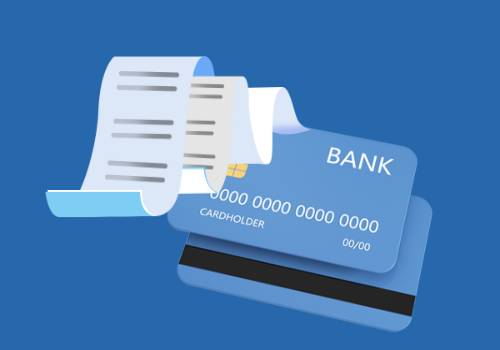OpenIddict使用教程
OpenIddict是一个ASP.NET Core身份验证库,可帮助您添加OpenID Connect和OAuth 2.0支持到ASP.NET Core应用程序中。下面是OpenIddict使用教程的步骤:
安装OpenIddict,在项目中添加OpenIddict.Core和OpenIddict.EntityFrameworkCore Nuget包。
配置OpenIddict,在Startup.cs文件中添加OpenIddict服务的配置。您可以选择使用内存或EFCore进行配置。以下是使用EF Core进行配置的示例:
 (资料图片)
(资料图片)
services.AddDbContext(options =>{ options.UseSqlServer(Configuration.GetConnectionString("DefaultConnection")); options.UseOpenIddict();});services.AddCustomOpenIddictApplication();services.AddCustomOpenIddictAuthorization();services.AddCustomOpenIddictScope();services.AddCustomOpenIddictToken();services.AddCustomOpenIddictValidation();services.AddCustomOpenIddictUser();services.AddOpenIddict() .AddCore(options => { options.UseEntityFrameworkCore() .UseDbContext() .ReplaceDefaultEntities(); }) .AddServer(options => { options.UseMvc(); options.EnableAuthorizationEndpoint("/connect/authorize") .EnableLogoutEndpoint("/connect/logout") .EnableTokenEndpoint("/connect/token") .EnableUserinfoEndpoint("/connect/userinfo"); options.RegisterScopes("openid", "profile", "email", "offline_access"); options.AllowImplicitFlow(); options.DisableHttpsRequirement(); options.AddSigningCertificate(File.ReadAllBytes(Configuration["Auth:Certificates:Path"]), Configuration["Auth:Certificates:Password"]); options.DisableAccessTokenEncryption(); options.SetAccessTokenLifetime(TimeSpan.FromHours(6)); }); - 添加授权策略,在Startup.cs文件添加需要的授权策略。以下是一个例子:
services.AddAuthorization(options =>{ options.AddPolicy("EmployeeOnly", policy => policy.RequireClaim("EmployeeNumber")); options.AddPolicy("AdministratorOnly", policy => policy.RequireRole("Administrator"));});- 在您的应用程序中使用OpenIddict,您可以使用OpenIddict来实现您的OAuth 2.0或OpenID Connect需求。以下是一些常见的用例:
4.1 登录页面
使用OpenIddict进行身份验证,您可以使用如下代码在您的控制器中。您可以使用请求重定向到触发OpenID Connect流:
[HttpGet("~/login")]public IActionResult Login(){ var request = HttpContext.GetOpenIddictServerRequest(); return View(new LoginViewModel { Nonce = RandomNumberGenerator.GetInt32(), ReturnUrl = request.RedirectUri, Ticket = request.GetOpenIddictServerTransactionId(), });}[HttpPost("~/login")]public IActionResult Login(LoginViewModel model){ if (ModelState.IsValid) { var user = await _userManager.FindByNameAsync(model.Username); if (user == null) { ModelState.AddModelError("Username", "Username or password is incorrect."); } else if (!await _userManager.IsEmailConfirmedAsync(user)) { ModelState.AddModelError("Email", "You must have a confirmed email to log in."); } else if (!await _userManager.CheckPasswordAsync(user, model.Password)) { ModelState.AddModelError("Username", "Username or password is incorrect."); } else { // 创建一个新的身份验证票据. var ticket = await CreateTicketAsync(user); return SignIn(ticket.Principal, ticket.Properties, ticket.AuthenticationScheme); } } ViewData["returnUrl"] = model.ReturnUrl; ViewData["nonce"] = model.Nonce; ViewData["transactionId"] = model.Ticket; return View(model);}4.2 注册页面
您还可以使用OpenIddict来实现您的注册页面。以下是一个例子:
[HttpGet("~/register")]public IActionResult Register(){ return View();}[HttpPost("~/register")]public async Task Register(RegisterViewModel model){ if (ModelState.IsValid) { var user = new ApplicationUser { UserName = model.Email, Email = model.Email, FirstName = model.FirstName, LastName = model.LastName, }; var result = await _userManager.CreateAsync(user, model.Password); if (result.Succeeded) { var code = await _userManager.GenerateEmailConfirmationAsync(user); var callbackUrl= Url.Action("ConfirmEmail", "Account", new { userId = user.Id, code = code }, protocol: HttpContext.Request.Scheme); await _emailSender.SendEmailAsync(model.Email, "Confirm your email", $"Please confirm your account by clicking this link: {callbackUrl}"); return RedirectToAction(nameof(RegisterConfirmation)); } foreach (var error in result.Errors) { ModelState.AddModelError("Email", error.Description); } } return View(model);}[HttpGet("~/register/confirmation")]public IActionResult RegisterConfirmation(){ return View();} 4.3 访问受保护的资源
最后,您可以使用OpenIddict来实现访问受保护资源的身份验证和授权。以下是一个例子:
[HttpGet("~/manager")][Authorize(Roles = "Manager")]public IActionResult ManagerDashboard(){ return View();}[HttpGet("~/employee")][Authorize(Policy = "EmployeeOnly")]public IActionResult EmployeeDashboard(){ return View();}[HttpGet("~/administrator")][Authorize(Policy = "AdministratorOnly")]public IActionResult AdministratorDashboard(){ return View();}- 通过OpenIddict实现Token刷新
当访问受保护的API时,您可以使用OpenIddict来实现使用token刷新。以下是实现Token刷新的一个示例方法:
[HttpPost("~/api/token/refresh")]public async Task Refresh([FromForm]string refreshToken){ var info = await HttpContext.AuthenticateAsync(OpenIddictServerDefaults.AuthenticationScheme); if (info == null) { return BadRequest(new { error = OpenIddictConstants.Errors.InvalidRequest, error_description = "The refresh token is no longer valid." }); } var principal = info.Principal; var user = await _userManager.GetUserAsync(principal); if (user == null) { return BadRequest(new { error = OpenIddictConstants.Errors.InvalidRequest, error_description = "The refresh token is no longer valid." }); } // 确保刷新令牌没有被撤销. if (!await _tokenManager.ValidateAsync( principal.GetId(), principal.GetClaim(OpenIddictConstants.Claims.JwtId))) { return BadRequest(new { error = OpenIddictConstants.Errors.InvalidRequest, error_description = "The refresh token is no longer valid." }); } // 从数据库得到客户端应用程序详细信息 var application = await _applicationManager.FindByClientIdAsync( principal.GetClaim(OpenIddictConstants.Claims.ClientId)); if (application == null) { return BadRequest(new { error = OpenIddictConstants.Errors.InvalidRequest, error_description = "The client application associated with this token is no longer valid." }); } var identity = await _userManager.CreateIdentityAsync(user, principal.GetScopes()); var ticket = await CreateTicketAsync(application, identity, principal); return SignIn(ticket.Principal, ticket.Properties, ticket.AuthenticationScheme);} - 通过OpenIddict实现密码恢复流程OpenIddict还可以实现忘记密码流程的重置密码,以下是一个简单的示例:
[HttpPost("~/forgot-password")][AllowAnonymous]public async Task ForgotPassword([FromForm] string email){ var user = await _userManager.FindByEmailAsync(email); if (user == null) { // 不要显示用户不存在,懂的都懂~ return Ok(); } var code = await _userManager.GeneratePasswordResetTokenAsync(user); code = WebEncoders.Base64UrlEncode(Encoding.UTF8.GetBytes(code)); var callbackUrl = Url.Action("ResetPassword", "Account", new { userId = user.Id, code = code }, protocol: HttpContext.Reque await _emailSender.SendEmailAsync( email, "Password Reset", $"Please reset your password by clicking here: link."); return Ok();}[HttpGet("~/reset-password")][AllowAnonymous]public IActionResult ResetPassword(string code = null, string userId = null){ return View(new ResetPasswordViewModel { Code = code, UserId = userId });}[HttpPost("~/reset-password")][AllowAnonymous]public async Task ResetPassword([FromForm] ResetPasswordViewModel model){ if (!ModelState.IsValid) { return View(model); } var user = await _userManager.FindByIdAsync(model.UserId); if (user == null) { // 不要显示用户不存在 return View("ResetPasswordConfirmation"); } var decodedCode = Encoding.UTF8.GetString(WebEncoders.Base64UrlDecode(model.Code)); var result = await _userManager.ResetPasswordAsync(user, decodedCode, model.Password); if (result.Succeeded) { return RedirectToAction(nameof(ResetPasswordConfirmation)); } foreach (var error in result.Errors) { ModelState.AddModelError(string.Empty, error.Description); } return View(model);}[HttpGet("~/reset-password-confirmation")][AllowAnonymous]public IActionResult ResetPasswordConfirmation(){ return View();} - 使用OpenIddict实现自定义Token发布方案
OpenIddict支持自定义Token发布方案,以适应各种需求。在以下示例中,我们将实现自定义发布方案来控制Token的过期时间:
public class CustomTokenEndpointHandler : OpenIddictServerHandler{ public CustomTokenEndpointHandler(IServiceProvider services) : base(services) { } public override async Task HandleAsync([NotNull] OpenIddictServerHandleContext context) { if (context == null) { throw new ArgumentNullException(nameof(context)); } // 从数据库检索客户机应用程序. var application = await context.HttpContext.GetOpenIddictServerApplicationAsync(); if (application == null) { throw new InvalidOperationException("The client application cannot be retrieved."); } // 从授权服务器设置检索用户主体. var principal = context.HttpContext.User; // 确保允许应用程序使用指定的授权类型。 if (!await ValidateClientRedirectUriAsync(application, context.Request)) { throw new InvalidOperationException("The grant type is not allowed for this application."); } //注意:这个自定义令牌终端点总是忽略“scopes”参数,并根据授予的scopes/roles自动定义声明。 var ticket = new AuthenticationTicket(principal, new AuthenticationProperties(), OpenIddictServerDefaults.AuthenticationScheme); // 根据请求的自定义授权类型自定义令牌生命周期. if (string.Equals(context.Request.GrantType, "urn:custom_grant", StringComparison.OrdinalIgnoreCase)) { // Set the token expiration to 1 hour. ticket.Properties.ExpiresUtc = context.Options.SystemClock.UtcNow.AddHours(1); } else { // 将令牌过期时间设置为默认持续时间(5分钟) ticket.Properties.ExpiresUtc = context.Options.SystemClock.UtcNow.Add( context.Options.AccessTokenLifetime ?? TimeSpan.FromMinutes(5)); } context.Logger.LogInformation("The custom token request was successfully processed."); await context.HttpContext.SignInAsync(ticket.Principal, ticket.Properties, ticket.AuthenticationScheme); // 将响应标记为已处理,以跳过管道的其余部分. context.HandleRequest(); }} 您需要将其添加到OpenIddict配置中:
services.AddOpenIddict() .AddCore(options => { // ... }) .AddServer(options =>{ // ... options.Handlers.Add(new CustomTokenEndpointHandler(services)); // ...}).AddValidation(options =>{ // ...});此时,您可以使用urn:custom_grant授权类型来发出过期时间为1小时的Token,这可以通过以下方式完成:
var client = new HttpClient();var request = new HttpRequestMessage(HttpMethod.Post, "http://localhost:5000/connect/token");request.Content = new FormUrlEncodedContent(new Dictionary{ ["grant_type"] = "urn:custom_grant", ["client_id"] = "your_client_id", ["client_secret"] = "your_client_secret", ["scope"] = "your_scopes_separated_by_spaces"});var response = await client.SendAsync(request);var payload = await response.Content.ReadAsStringAsync(); 总结
本文介绍了如何使用OpenIddict创建一个基本的身份验证和授权服务器。当然,在实现身份验证和授权服务器时有很多细节需要考虑,例如维护安全性、处理错误、管理用户和客户端应用程序等。希望这篇文章对您有所帮助!
X 关闭
推荐内容
- OpenIddict使用教程
- 三轴及以上货车、中型以上客车请绕行!西安环山路西太路十字至周鄠界施工|天天报道
- 每日看点!劳德鲁普:带领斯旺西夺得英联杯是让我终生难忘的经历
- 青海省林业和草原重大项目开工暨黄南州国土绿化
试点示范项目复工仪式举行_环球时快讯 - 环球热推荐:百应控股(08525.HK):2022年净亏损2632.1万元
- 要闻:应付账款周转天数(应付账款周转)
- 100m宽带用什么路由器_100m-全球资讯
- 旅客遇电诈一意孤行 机场民警火速前往拦截
- 3月,涟水热门小区二手房价出炉! 天天速读
- 环球视点!新水浒传女演员表
最近更新
-

OpenIddict使用教程
资讯 -

三轴及以上货车、中型以上客车请绕行!西安环山路西太路十字至周鄠界施工|天天报道
资讯 -

每日看点!劳德鲁普:带领斯旺西夺得英联杯是让我终生难忘的经历
资讯 -

青海省林业和草原重大项目开工暨黄南州国土绿化
试点示范项目复工仪式举行_环球时快讯资讯 -

环球热推荐:百应控股(08525.HK):2022年净亏损2632.1万元
资讯 -

要闻:应付账款周转天数(应付账款周转)
资讯 -

100m宽带用什么路由器_100m-全球资讯
资讯 -

旅客遇电诈一意孤行 机场民警火速前往拦截
资讯 -

3月,涟水热门小区二手房价出炉! 天天速读
资讯 -

环球视点!新水浒传女演员表
资讯 -

世界关注:银行业保险业健全公司治理成效明显 清退违法违规股东3600多个
资讯 -

当前速读:fw什么意思网络用语_fw是什么意思网络用语
资讯 -

新动态:中国有充分底气和信心实现高质量发展(国际论坛)
资讯 -

暗夜精灵德鲁伊介绍 天天要闻
资讯 -

新资讯:扬州仁爱医院
资讯 -

装卸搬运设备有哪些种类_装卸搬运设备有哪些
资讯 -

泡芙的十句话? 天天快报
资讯 -

世界今头条!广东省佛山市2023-03-25 16:14发布暴雨黄色预警
资讯 -

更换路由器方法教程 每日观察
资讯 -

染木树属_关于染木树属简述_当前看点
资讯 -

麦冬行情周报(3.20-3.25)_全球观点
资讯 -

狂轰46+9+8,还是输给勇士!恩比德尽力了,普尔成末节之王
资讯 -

观天下!考斯滕里面还穿衣服吗 考斯滕里面还需要穿衣服吗
资讯 -

海沧水厂三期工程满水试验 建成后海沧区自来水供应量将翻倍 世界要闻
资讯 -

【新机】撞期红米 荣耀Play7T系列3.28发 6000mAh大电池
资讯 -

不堪卒读与不忍卒读的意思_不忍卒读的意思 全球快看
资讯 -

广州突下冰雹,白昼如夜|快看点
资讯 -

焦点信息:如懿传金玉妍结局
资讯 -

销量持续下滑,价格直降1万元,欧尚Z6官降换销量?-当前滚动
资讯 -

每日动态!展会回暖折射中国经济复苏动力 众多品牌举办新品首发首秀
资讯 -

【创世战车国际服更新日志翻译】2023小车启示录
资讯 -

润邦股份:拟收购FLSmidth集团全球散料装卸搬运系统业务及该业务的全球售后服务体系 当前快看
资讯 -

汉代乐队啥配置?“云”探天津博物馆中国古代音乐文物展
资讯 -

重点聚焦!2022国庆高速免费吗 2022年国庆节高速是免费的吗
资讯 -

2023长春宽城消费季工会福利活动
资讯 -

颜宁兼任深圳湾实验室主任
资讯 -

即时通讯行业发展如何? 2023年即时通讯行业市场发展前景分析
资讯 -

天天简讯:二手房反弹背后·杭州| 以价换量换来“小阳春”,杭州网红板块中介小哥称“别想着炒房”,业内:不具备上涨前提
资讯 -

十佳省级经济开发区鞍山占两席 鞍山经济开发区和海城经济开发区双双上榜-世界今头条
资讯 -

玛多:答好民生考卷 绘就幸福画卷
资讯 -

环球精选!安县属于哪个市
资讯 -

花盆没有孔怎么看出浇透没?花盆底部没有孔怎么打孔-环球聚看点
资讯 -

焦点速看:路由器reset键在键盘哪里打开_路由器reset键在键盘哪里
资讯 -

金隅景和园_银河湾明苑_天天资讯
资讯 -

焦点速讯:全车无任何档杆,配Yoke方向盘,全新Model S亮相南方各地门店
资讯 -

要女主火影同人小说
资讯 -

长期陷入亏损泥潭,前两月突然上演业绩翻身,爱康科技公告与回应“自相矛盾”? 热点聚焦
资讯 -

千亿巨头换帅 四川首富34岁女儿接任是什么情况|天天热议
资讯 -

文公菜_关于文公菜简介
资讯 -

天天热资讯!伦敦:国会大厦、大本钟和西敏寺
资讯 -

每日观察!秦氏金升:3.23金价冲高看持续,黄金走势分析及操作建议
资讯 -

大腿抽筋怎么办啊_大腿抽筋怎么办-全球观天下
资讯 -

大清皇帝列表_快播报
资讯 -

活久见!独行侠全员"迷路"送勇士5打0 库班痛斥裁判
资讯 -

视点!桂花酿的做法_桂花酿
资讯 -

腾讯净利润重回两位数增长
资讯 -

概率论与数理统计学考指要(关于概率论与数理统计学考指要介绍)_全球动态
资讯 -

天天简讯:快讯2023-03-23 00:10:04
资讯 -

演员黄景瑜简历|每日聚焦
资讯 -

世界要闻:秦都区吴家堡街道开展优抚对象健康体检活动
资讯 -

今日报丨藏格矿业:藏青基金拟6亿元购买国能矿业5%股权
资讯 -

全球观天下!狮头股份:华远资本拟清仓减持不超5.07%公司股份
资讯 -

手机优酷,手机可以免费看优酷视频
资讯 -

违章建房强拆能得到赔偿吗
资讯 -

当前时讯:陈金皓3.22黄金晚间最新行情价格走势预测及黄金原油独家操作建议
资讯 -

河南驻马店2022年成人高考成绩查询入口已开通
资讯 -

世界观焦点:2023年第一季度保定普通话水平测试考试时间一览
资讯 -

全球热资讯!济南人才·就业云聘e码通上线运行 大数据赋能高校毕业生精准就业
资讯 -

广灵县气象局发布沙尘蓝色预警【Ⅳ级/一般】【2023-03-22】
资讯 -

每日动态!佛系少女mp3下载
资讯 -

大公司动态丨宁德时代麒麟电池已量产;外媒:瑞银收购瑞信预计导致数万人被裁员
资讯 -

张子枫向鹿晗要签名,谁注意到她的坐姿?鹿晗:买不起
资讯 -

试验检测员考试合格标准_试验检测员报考条件
资讯 -

焦点播报:演员奚望最照片_演员奚望个人资料
资讯 -

在家网上兼职日结_在家网上兼职-全球资讯
资讯 -

大洋深处,防空演练进行中
资讯 -

焦点热议:虎牙马桶c和九哥分手_马桶c的老婆九哥
资讯 -

铁建重工:融资净买入393.65万元,融资余额2.77亿元(03-20)
资讯 -

海顺新材(300501):第五届第三次监事会会议决议,审议关于进一步明确公司向不特定对象发行可转换公司债券方案的议案等议案
资讯 -

世界动态:涵道比低于多少的发动机称为小涵道比涡轮风扇发动机_涵道比
资讯 -

每日热文:中国古代建筑有哪些主要特征_中国古代建筑有哪些
资讯 -

蔚小理年亏255亿,新能源车板块走“A”型 天天快播报
资讯 -

四川确定3492家国省生猪产能调控基地
资讯 -

全球快播:2023年3月20日原油价格走势分析
资讯 -

郑州生育津贴需要准备哪些材料 当前观点
资讯 -

国台办:大陆方面欢迎马英九先生来访_全球即时看
资讯 -

全英羽毛球公开赛:郑思维/黄雅琼夺得混双冠军 世界即时
资讯 -

国家认可的化妆学校查询(化妆培训学校哪个好)
资讯 -

天天信息:牙龈出血口臭怎么办有什么办法_牙龈出血口臭怎么办
资讯 -

在没有绷带急救伤员的情况下(在没有绷带急救伤员的情况下)
资讯 -

中信证券:A股全面修复行情的第二波虽略有延后 但趋势已日益清晰
资讯 -

国防视线:雷锋故里的“活雷锋”|当前热点
资讯 -

手足癣灰指甲有什么药才能除根给回答_脚癣一次净能治灰指甲吗|全球球精选
资讯 -

《大众日报》聚焦威海市石岛管理区:志愿服务让一村人过成一家人
资讯 -

世界快播:安徽远飞物联网技术有限公司
资讯 -

焦点滚动:冷冻除湿机批发_冷冻除湿机
资讯 -

焦点消息!赣南师范大学研究生院官网
资讯 -

今亮点!全面注册制相关业务今日开启首次全网测试
资讯 -

微头条丨新泉股份(603179)3月17日主力资金净卖出1859.39万元
资讯 -

法国党派领袖认为美国有春季在乌克兰“反攻”的计划 每日消息
资讯
Copyright © 2015-2022 欧洲培训网版权所有 备案号:沪ICP备2022005074号-23 联系邮箱: 58 55 97 3@qq.com


